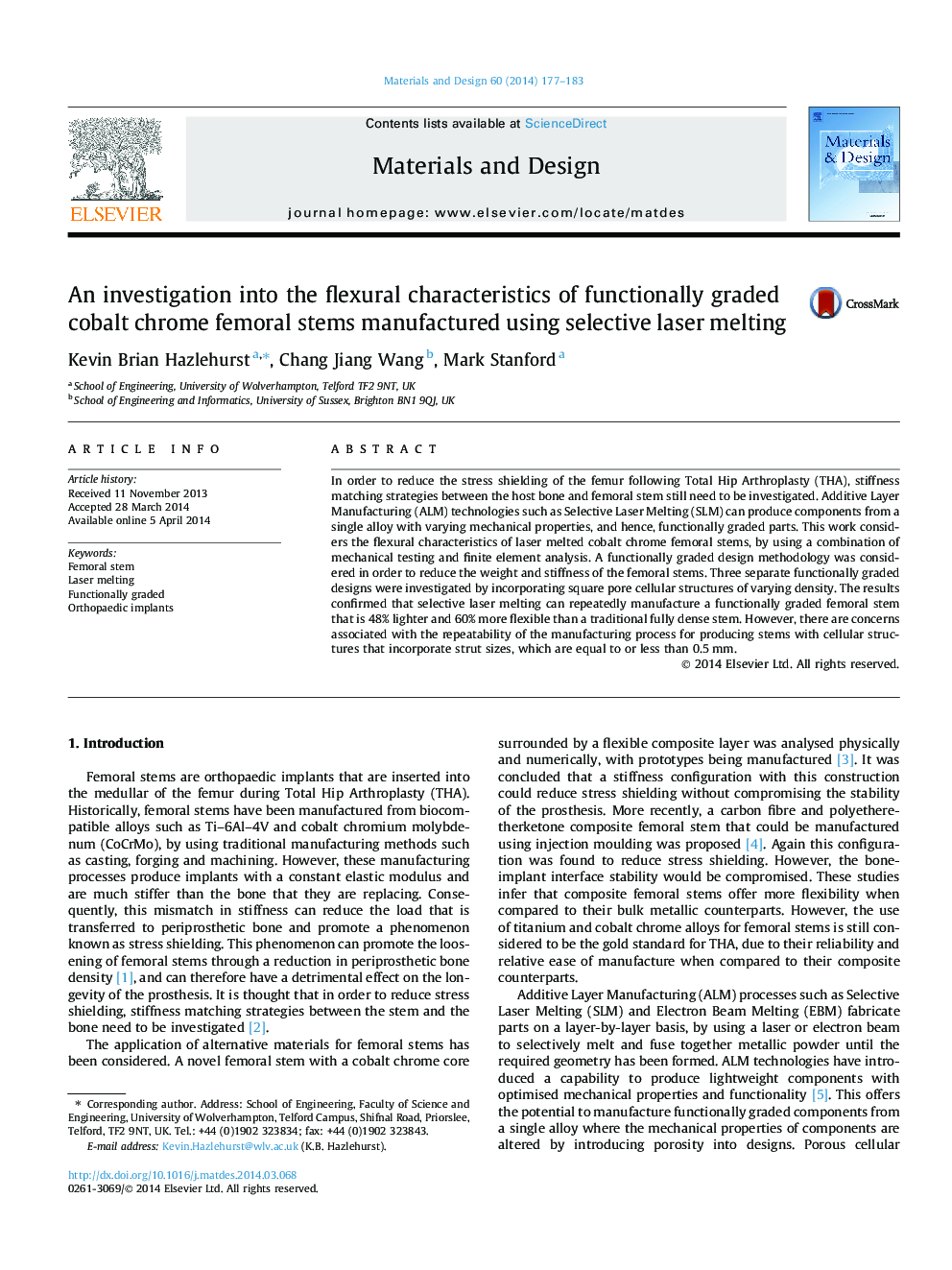| Article ID | Journal | Published Year | Pages | File Type |
|---|---|---|---|---|
| 829183 | Materials & Design (1980-2015) | 2014 | 7 Pages |
•The flexural properties of laser melted CoCrMo femoral stems were investigated.•Cellular structures were modelled as continuum parts in the finite element models.•A functionally graded stem with reduced weight and stiffness has been proposed.
In order to reduce the stress shielding of the femur following Total Hip Arthroplasty (THA), stiffness matching strategies between the host bone and femoral stem still need to be investigated. Additive Layer Manufacturing (ALM) technologies such as Selective Laser Melting (SLM) can produce components from a single alloy with varying mechanical properties, and hence, functionally graded parts. This work considers the flexural characteristics of laser melted cobalt chrome femoral stems, by using a combination of mechanical testing and finite element analysis. A functionally graded design methodology was considered in order to reduce the weight and stiffness of the femoral stems. Three separate functionally graded designs were investigated by incorporating square pore cellular structures of varying density. The results confirmed that selective laser melting can repeatedly manufacture a functionally graded femoral stem that is 48% lighter and 60% more flexible than a traditional fully dense stem. However, there are concerns associated with the repeatability of the manufacturing process for producing stems with cellular structures that incorporate strut sizes, which are equal to or less than 0.5 mm.
